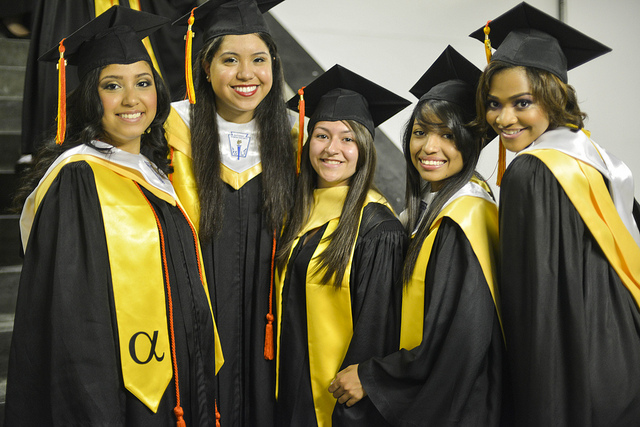I have written about John W. Lavelle Prep Charter School before. I helped start it as a middle school, built on the crazy idea that you must integrate students with mental health challenges with the general population for them to be successful.
Mind you, these students tend to have the highest dropout rate of any disability category. And not only were we reserving roughly a third of our seats for them, we were promising to prepare them for college.
As our students got older and the student population grew, we extended Lavelle to K-12. Last summer all of our seniors graduated with college acceptances and regents or advanced regents diplomas. This graduating class was 60 percent students with special needs and 80 percent are eligible for free or reduced-price lunch.
Everyone doubted us when we applied to start this charter school targeting students with emerging mental health challenges, but nobody is doubting now. They want more schools.
One Track: The College Track
“We needed a level playing field for kids with mental illness,” says Dr. Ken Byalin, the founder of Lavelle Prep, as he explains the genesis of the school. “There were some special education programs, but there were big gaps in service as students got older.”
Sometimes these kids needed to be academically challenged, too. “There is also a set of kids who were highly impaired by mental health challenges, but academically high functioning, who again received little or no services.”
Dr. Byalin is himself a longtime social worker and program director in mental health services, and a founder of the Verrazano Foundation, which combats stigma and discrimination against those with mental illness. Having worked in mental health for decades, he was aware of some of the failed approaches. “Segregation has not worked in mental health,” he says.
Instead, he had very simple ways to do things differently. “Students need to be integrated in secondary school to be successful in college, and we need to create unitary programs, where everyone gets the same thing, and they all sit in the same classes and all learn the same things.”
That philosophy guided the school design: small classes of 17 or less, with a teacher dual-certified in both special education and a subject matter (such as algebra or English), along with highly-trained paraprofessionals. All staff get training on working with mental health challenges.
Often in “inclusive” classrooms, there are two teachers and really two simultaneous classes. Students may physically sit in the same class, but in fact different teachers are teaching different content. At Lavelle, it’s one class for everyone. As Dr. Byalin says, “There is only one program at Lavelle Prep, and everyone participates.”
Dealing With Your ‘Stuff’
All students and staff also participate in a robust wellness curriculum. We all have “stuff”—as the school lingo calls it—and we all need to learn strategies to deal with it. This begins the process of de-stigmatizing emotional challenges.
And once mental health challenges are de-stigmatized, students and families start to talk about them.
Traditionally, families are known to reject services for fear of being stigmatized, but at Lavelle families are more likely to talk about services and much more likely to accept offers of help. Sometimes they even ask for it.
What’s Next
I was an early funder, and I went on to work with the school as one of my original charter incubator clients and eventually joined the board. So I may be biased here. But the future is bright on Staten Island.
Here, the Lavelle Prep team plans on creating a network of charter schools, connected by the unifying theme of integrating students, but catering to different subsets of learners at different school sites.
The first new school has already opened and graduated students, New Ventures Charter School. New Ventures targets students out of school, we re-engage them through internships, and again, an integrated and emotionally supportive program.
While all the schools would work inclusively with any student who applied, they would tailor programs to support specific populations. For instance, one school would cater to students on the autism spectrum, another would cater English-language learners—with more programs developing as more needs emerge that we have the capacity to meet.
Changing Mindsets
So if this integrated approach is so successful, why isn’t everyone doing it? The biggest challenge we have is one of mindset, according to Dr. Byalin. “We are still wedded to segregation, people don’t believe in integration…and there is always a resistance to change.”
This has all been very hard work with some missteps and stumbles, as at any school. There were times in the first year when I worried about making payroll, as we were just scraping by financially. And despite the mission, we weren’t attracting traditional funders. But a dedicated and seasoned staff really pushed the school forward and pivoted when we needed to, in the end providing a unique and uniquely successful program.
A few years back a potential funder visited Lavelle Prep and was unimpressed. I think they expected to see children who were struggling with their disabilities, confined to “special classes.” Instead they saw integrated classrooms where the students with special needs were basically indistinguishable from other students. To the funder these classrooms weren’t special enough—they looked just like regular classrooms.
And while our lack of buzzwords and shiny bells and whistles hasn’t made us the darlings of philanthropy, an integrated school where no student looks “special” is exactly the point.

